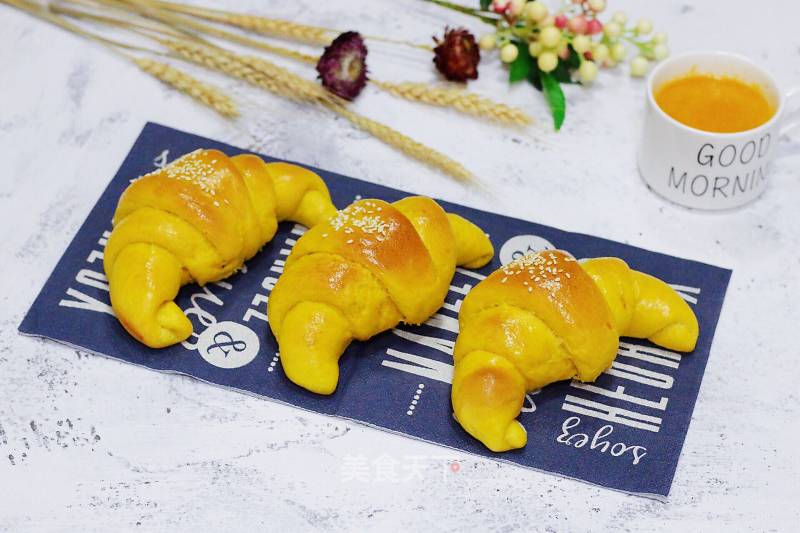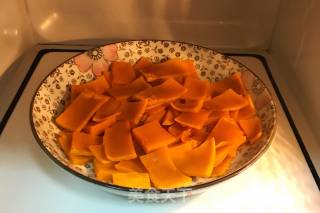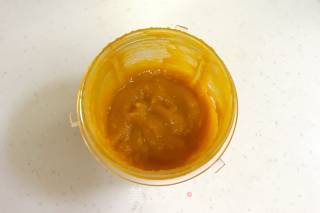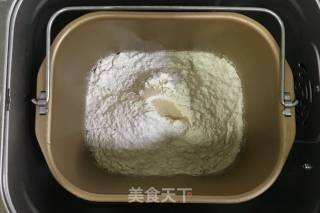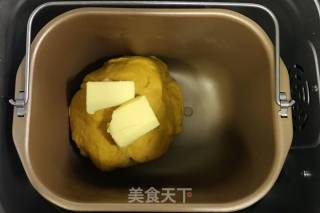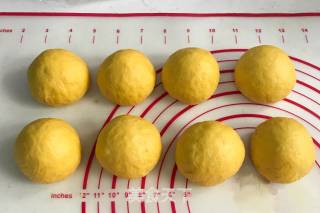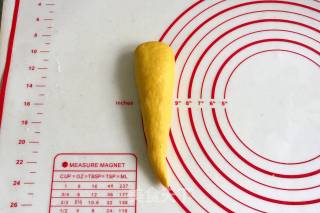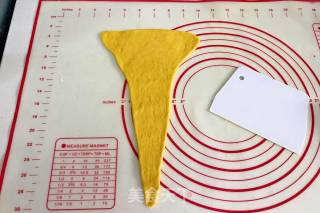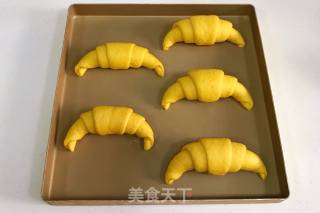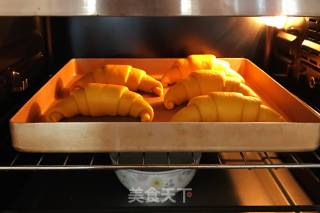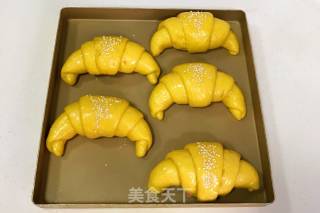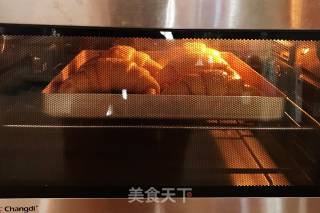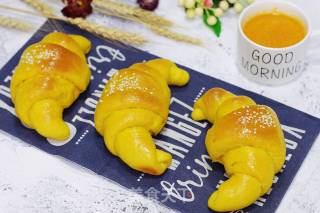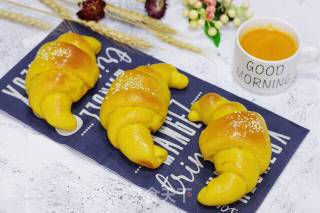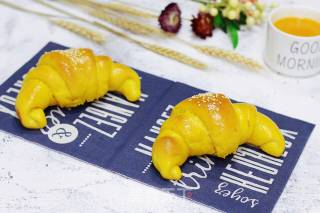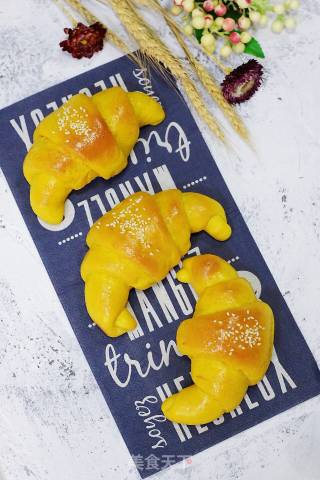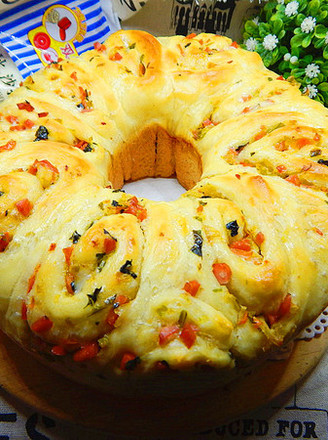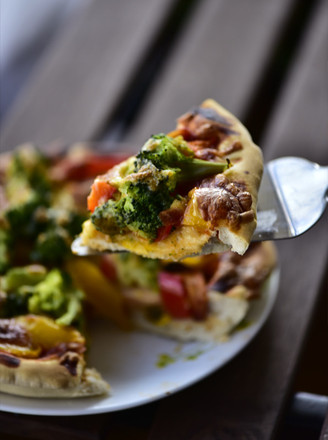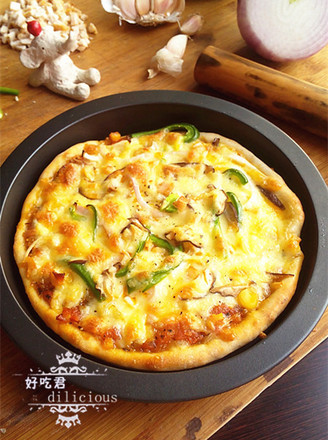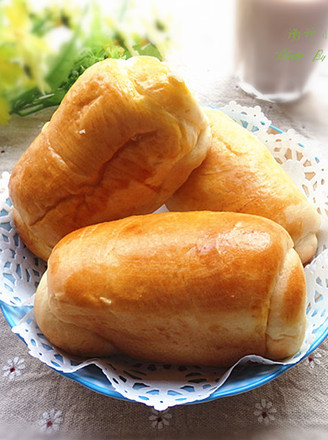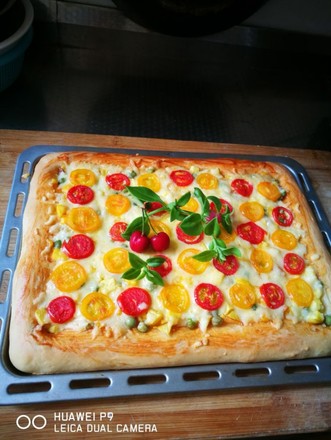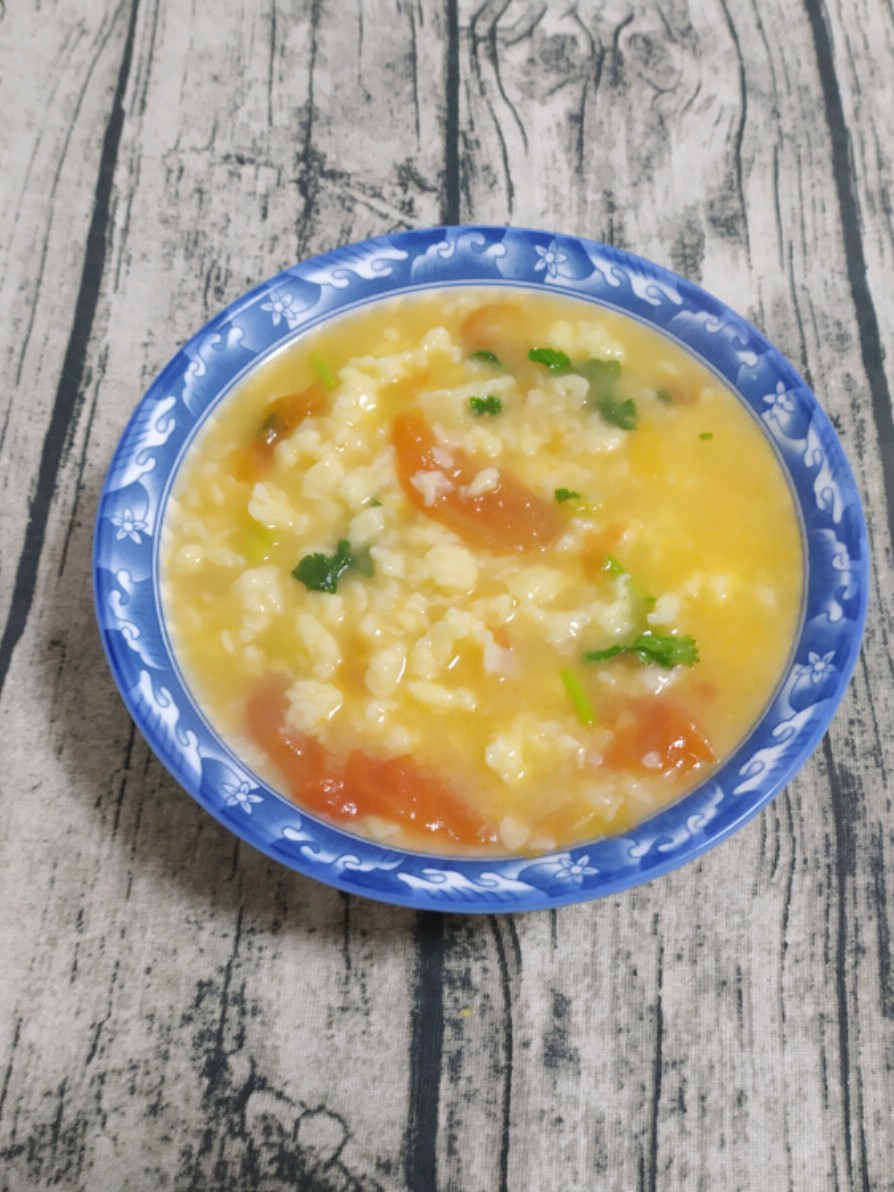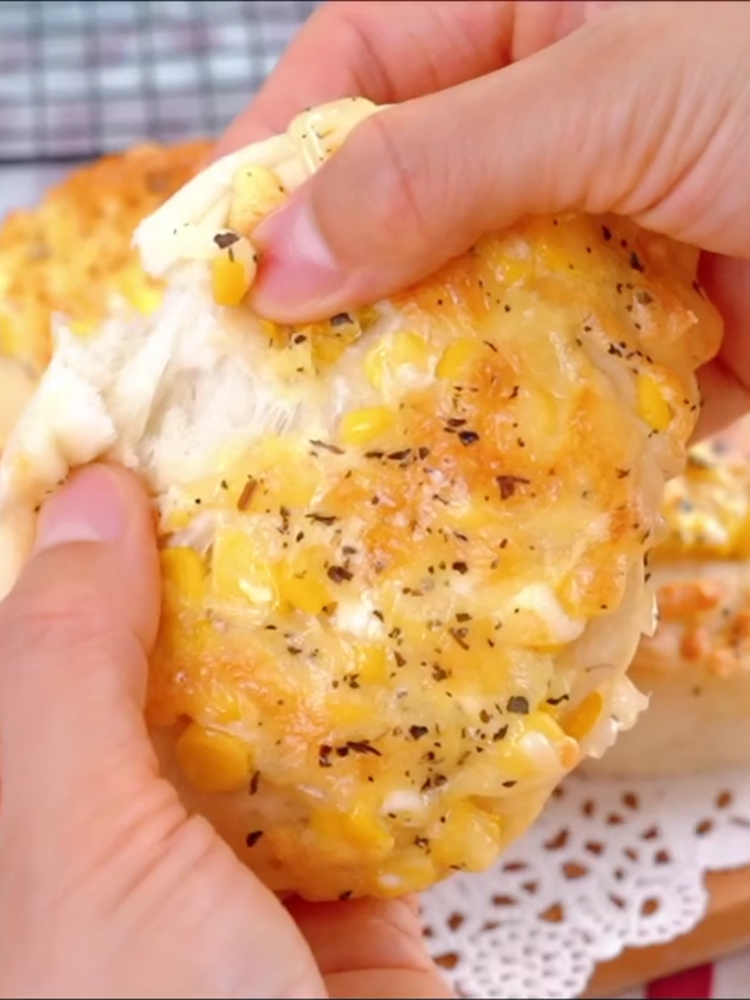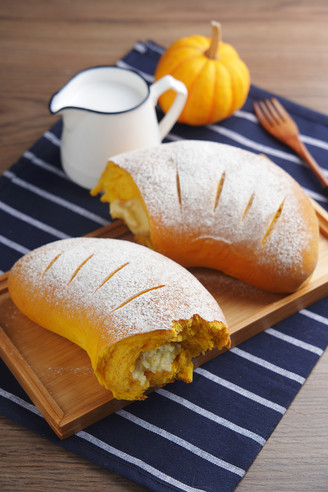Whole Wheat Pumpkin Croissants
1.
Cut the pumpkin into thin slices and heat in the microwave for about 3 minutes until cooked.
2.
Use a food processor or a wall breaker to beat the cooked pumpkin into puree.
3.
All the bread ingredients except butter are put into the bread machine (in the order of liquid first, sugar and salt diagonally), dig a hole in the middle of the flour, pour in the yeast powder, and start the dough mixing process.
4.
Knead for about 15 minutes to form the dough, add butter and continue to knead the dough for 20 minutes to the expansion stage, and you can pull out the film.
5.
When the dough is doubled, dip your fingers in flour and poke holes so that it does not collapse or rebound.
6.
Take out the dough and let it out, divide it into eight equal parts, and roll it round and relax for 15 minutes.
7.
Take a loose dough, flatten it with your hands, and roll the dough into an oval shape with a rolling pin.
8.
Fold the two sides in half and pinch the mouth tightly.
9.
Use your hands to roll the dough into a carrot shape.
10.
Use a rolling pin to just grow into a triangle shape, and roll out the wide part on both sides.
11.
Roll up from top to bottom and close your mouth.
12.
Place them in a non-stick bakeware one by one.
13.
Put it in the oven for secondary heating. Put a bowl of warm water on the bottom of the oven to maintain humidity. The secondary fermentation temperature is about 38 degrees and the humidity is 85%.
14.
Take it out when it is doubled, brush the surface of the bread with egg liquid and sprinkle a little white sesame seeds.
15.
Put it into the middle layer of the preheated oven and bake for about 13 minutes at 175 degrees.
16.
Finished picture.
17.
Finished picture.
18.
Finished picture.
19.
Finished picture.
20.
Finished picture.
Tips:
1. The water content of different pumpkins is different, and the amount of liquid is increased or decreased according to the actual dryness and wetness.
2. Please adjust the specific baking temperature and time according to the respective oven conditions. After the surface of the bread is colored, the tin foil can be covered to prevent the color from baking.

